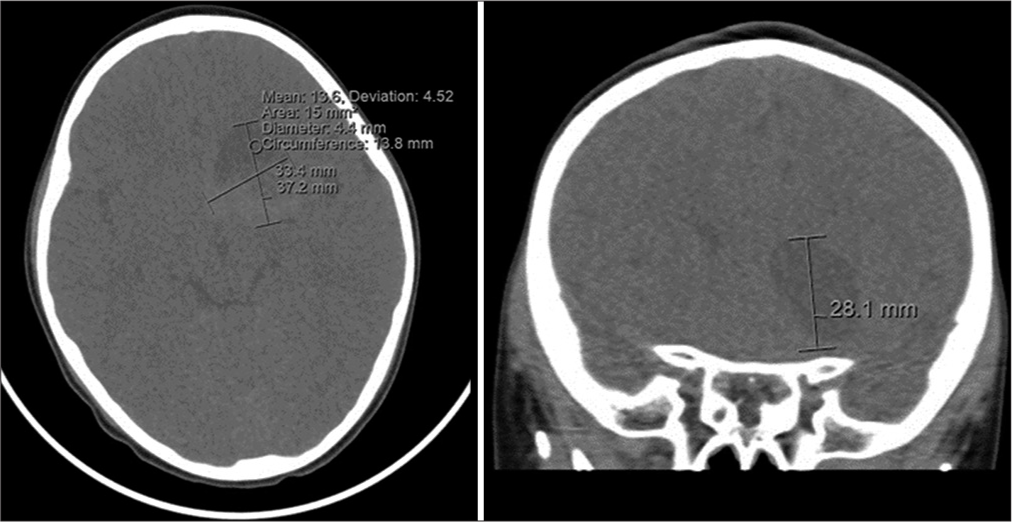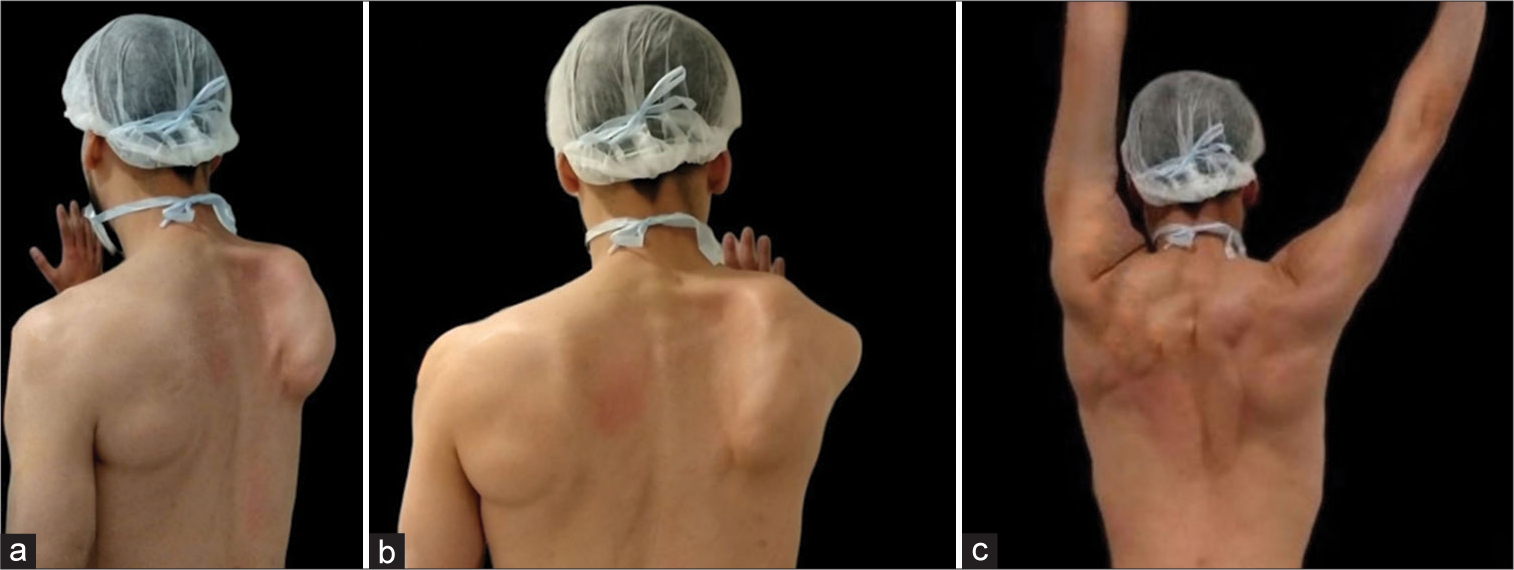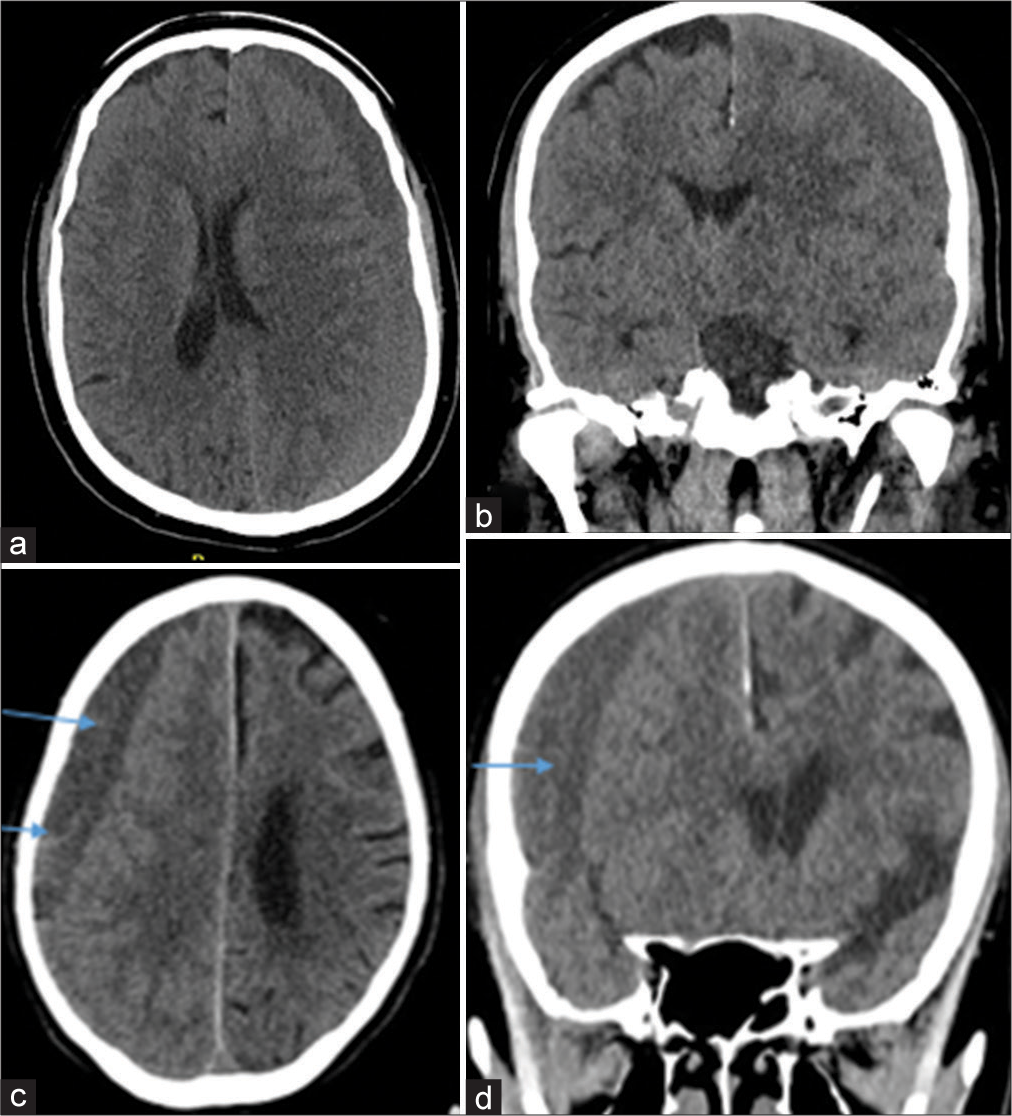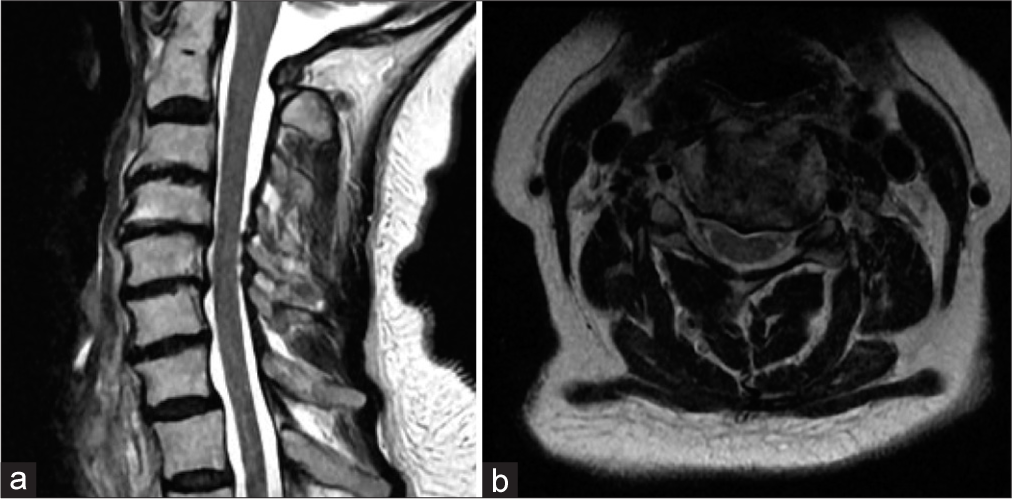Surgical options in thoracic disc herniation: Evaluating long-term outcomes of 21 cases based on a single-center 10-year experience
Date of publication: 17-May-2024
Background: Symptomatic thoracic disc herniation (TDH) is a rare pathology that is addressed with relatively challenging surgical approaches, the choice and technical execution of which have been well described in the literature. Interestingly, long-term outcomes, including surgical site pain-related disability, the need for instrumentation, and commonly occurring complications such as cerebrospinal fluid (CSF)-pleural fistula have not been widely addressed. Here, we address the complication profiles and long-term outcomes of different surgical approaches for TDH.
Pediatric central nervous system (CNS) neuroblastoma: A case report
Date of publication: 17-May-2024
Background: Neuroblastomas are rare tumors activated by the FoxR2 gene commonly found in pediatric patients. Due to the novelty of these tumors, there is no standard diagnostic profile. However, they have been found to express Olig2, MAP2, SOX10, ANKRD55, and synaptophysin, and they can be identified with magnetic resonance imaging (MRI). Treatment with chemotherapy combined with stem cell rescue and craniospinal irradiation can improve non-infant patient outcomes.
Thoracodorsal to long thoracic nerve transfer in a patient with traumatic injury: A case report
Date of publication: 17-May-2024
Background: Traumatic injury to the long thoracic nerve causes paralysis of the serratus muscle, clinically expressed as winged scapula and functional impairment of the shoulder girdle. Treatment varies according to the severity of the injury, with a focus on early intervention for best results; however, the therapeutic approach remains a challenge at present.
Chronic subdural hematoma needs to be named differently
Date of publication: 17-May-2024
Evaluating intraoperative ultrasound (IOUS) in focal cortical dysplasia (FCD) resection surgery: A systematic review
Date of publication: 17-May-2024
Background: Surgery is the best approach to treating focal cortical dysplasia (FCD)-related epilepsy; yet, it has suboptimal outcomes because distinguishing the boundaries between the FCD region and normal brain tissue intraoperatively poses a challenge. The use of intraoperative ultrasound (IOUS) helps demarcate FCD lesion borders leading to more accurate intraoperative resection. In this review, the use of IOUS for the resection of FCD was evaluated.
Endolymphatic sac tumor: An urgent case presenting acute intracranial hypertension successfully treated with suboccipital decompressive craniectomy – 8 years of follow-up
Date of publication: 17-May-2024
Background: Endolymphatic sac tumor (ELST) is a rare lesion. It may be sporadically or associated with Von Hippel-Lindau syndrome. Progressive audiovestibular symptoms characterize the typical clinical presentation. Here, we report a unique case of ELST with acute intracranial hypertension (IH) due to tumor compression, successfully treated with an urgent suboccipital decompressive craniectomy (SDC).
C5 palsy following esophageal diverticulum resection
Date of publication: 10-May-2024
Background: C5 palsy (C5P) is a recognized potential postoperative complication of cervical spine surgery but has rarely been reported following an open esophageal diverticulectomy.
Acute hyponatremia post craniotomy resulting in a unilateral fixed and dilated pupil: A case study on diagnosis and management
Date of publication: 10-May-2024
Background: Postoperative hyponatremia is a known complication of intracranial surgery, which can present with depressed mental status. Hyponatremia resulting in focal neurologic deficits is less frequently described.
Intrasellar chordoma masquerading as a pituitary neuroendocrine tumor: Illustrative case
Date of publication: 10-May-2024
Background: Chordomas are rare, locally aggressive neoplasms recognized as derivatives of the notochord vestiges. These tumors typically involve the midline axial skeleton, and intracranial chordomas exhibit proclivity for the spheno-occipital region. However, purely intrasellar occurrences are extremely rare. We report a case of intrasellar chordoma, which masqueraded as a pituitary neuroendocrine tumor.
Intraoperative monitoring of cerebrospinal fluid gas tension and pH before and after surgical revascularization for moyamoya disease
Date of publication: 10-May-2024
Background: This study aimed to directly measure cerebrospinal fluid (CSF) gas tensions and pH before and after superficial temporal artery to middle cerebral artery (STA-MCA) anastomosis for moyamoya disease.















